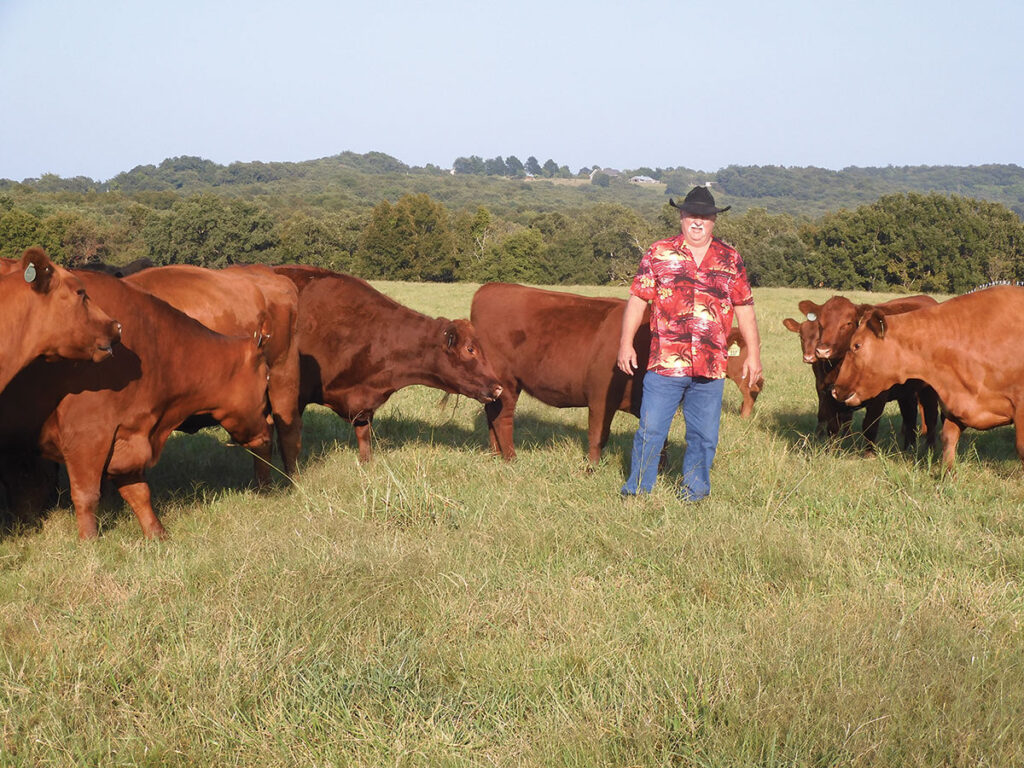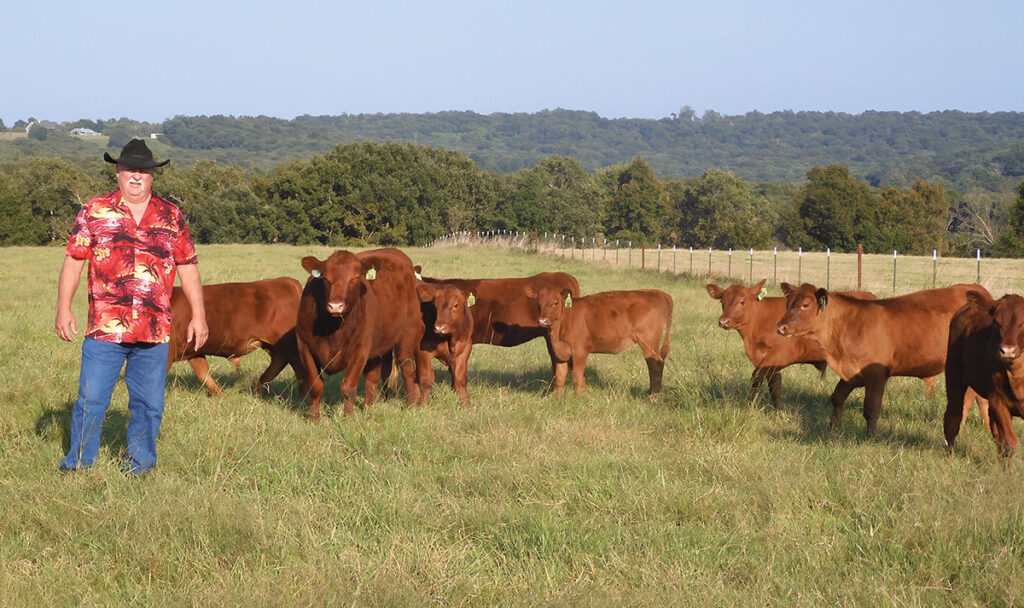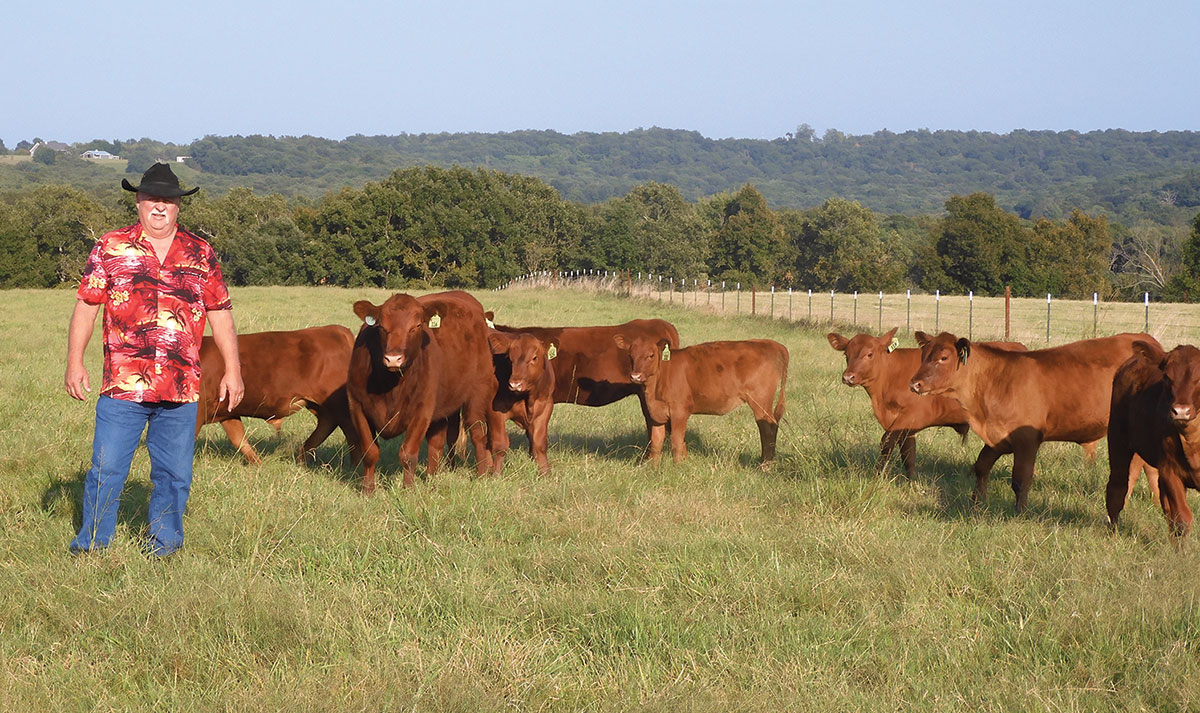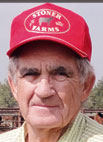
Couple reclaim a farm, incorporate a rotational grazing system
WEST FORK, ARK. – After David Kruckemeyer retired as a police officer and Renea as an elementary school teacher/librarian, the couple moved from Texas to Northwest Arkansas to be near family. When property on Bug Scuffle in West Fork, Ark., came up for sale, Renea fell in love with the name, and David eagerly acquired the 85-acre property.
“The site was a wreck but had potential as a retirement cattle ranch,” David explained. “My underlying premise was to work smarter rather than harder to maintain a cattle herd for many years by being a good steward of what God provides.”
The farm came with an old house, a tornado-ravaged chicken house, and a barn with parts scattered in a pond and pasture. Inferior quality and deteriorating fences were poorly laid out into two unwieldy, shadeless pastures with weeds everywhere and with ponds rank with algae.
David saw beyond that to the paved road, rural water, trash pickup, phone service, 20-minute access to a developed urban area, and, perhaps most importantly, adequate potential water sources, all amenities their Texas ranch did not have. Although starting from scratch, everything they needed was there, including a small, fenced alleyway to the working area that became vital in the eventual layout.
David’s design evolved from learning responsibility and resourcefulness as a youngster. When he entered school, he helped castrate pigs and goats at his grandfather’s livestock/melon ranch. Starting at seven through high school, he independently gathered cattle on horseback on his dad’s and uncle’s ranch and helped vaccinate and tag at the chute. Through FFA, he internalized the intricate interrelationship of grass, water, cattle, health and profitability.
Kruckemeyer Ranch in West Fork soon began to take shape. The old house was razed, and a new concrete home site was selected.
As the house was being built, David removed old fencing and began erecting new, Texas-style perimeter fencing and then interior seven-strand barbed wire fencing.
“I like a fence cattle can’t put their head through, a fence with a T-post every 10 feet, strengthened with two fence rigid staves in between each T-post and pipe corner posts so the fence stays vertical when cattle push,” David said. “Good fences make good neighbors and saves wasted time looking for lost cattle.”
Erecting a new fence meant having a clear vision of how the land and water were to be used – that required a study of local weeds, safe water treatments, and other essential differences from the Texas environment. The ranch layout is 65 acres of growth-determined rotational pastures based on a five-paddock system and can be increased through portable electric fences. The ranch currently supports 12 Red Angus cow/calf pairs, and carcass size proves the necessity of the sturdy fence system.

Pastures are arranged for access to water sources and connected to the alleyway for simplified and stress-free movement and gathering for work sessions, including vaccinations, tagging, castrating and branding. Further, ease of access to the work area makes for easy loading and unloading.
Two of the five pastures are always in a hay field rotation and baled once, typically producing enough to meet ranch needs of 45 to 60 days of hay per winter. Each year, one pasture is rotated out and another in. Hay pastures naturally reseed themselves, with the pasture rotating out and being fertilized after haying to encourage cool grasses to grow. Between haying cycles, grass is naturally fertilized by cattle when allowed to graze.
Cattle graze one of the other pastures until the grass height reduces to 4 to 6 inches when they move to another pasture through the alley. The success of David’s system is in the numbers. He tested soil and hay two times per year for the first three years and now once a year.
“Last year, my hay tested at 15.2 percent protein with a total digestive nutrient level of 61.8,” David explained. “Managing what God gives takes care of the animals.”
According to David, balance is everything. Soil tests tell him what the land needs. He uses weed control as necessary, though as the grass gets thicker and stronger, the need for herbicides decreases. It is more cost-effective and efficient to fertilize than to feed supplements. The result is the only supplement cattle receive is mineral with fly control.
Cattle spend an average of 3 to 4 weeks in each pasture before moving. Because of grass health, David mows the other rotational pastures to cut off the seed heads, thereby controlling pinkeye, which spreads rapidly through herds, resulting in time-consuming and expensive treatment.
“Two hours of easy mowing more than makes up for pinkeye treatment,” David said. “I love watching my cattle and don’t have to leave the house to check on every animal in the herd. Our cattle routinely migrate past the back of the house to go to water in the morning and towards dusk, so seeing them is easy and especially nice during winter.”
Another helpful feature of this ranch is limiting access to the main pond. The cattle have learned to take turns drinking and are unable to stand in the water for an extended time. The main pond is augmented by a spring-fed creek and two other ponds.
“The one recommendation I have for others is to adopt the Beef Quality Assurance practices because I have found it adds $500 to $700 difference per animal when sold,” David remarked.
This fall is an important milestone because David is retaining one bull calf to breed his herd next June and selling the rest of his stock in the fall to prevent inbreeding issues. His mommas are large and efficient, but he is unworried about replacing them because he has watched his system develop mommas before when he started with far less stout young mommas as his beginning herd.
“Renea has become a ranch hand and helps with vaccinating and sorting as well as ear tagging and maintenance,” David said. “Our goal was and is to be able to leave home for a trip and know everything will be just fine. Everything has come together well, and we’re very grateful.”







